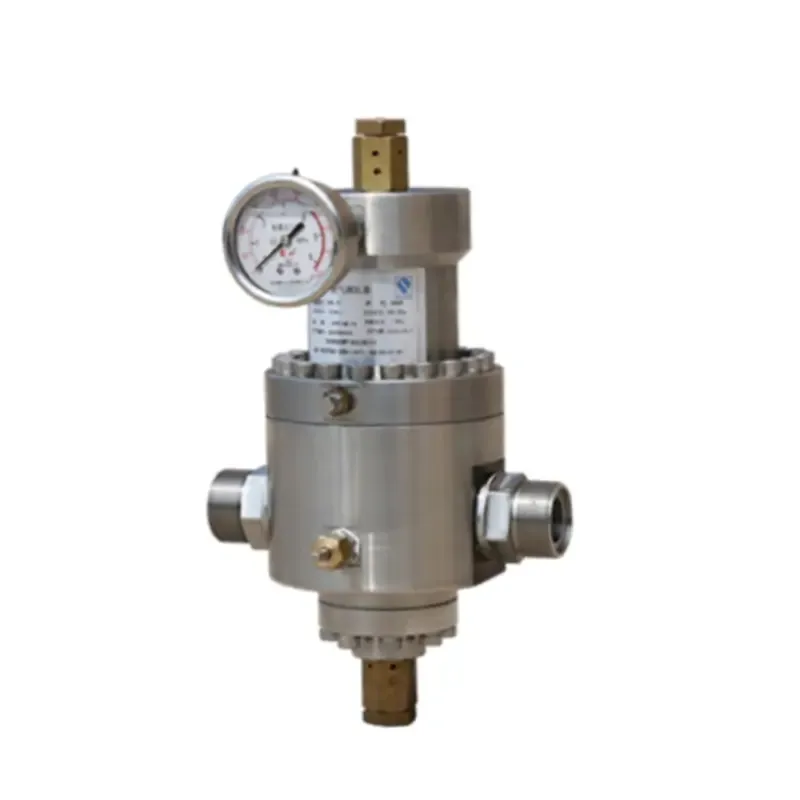
Jul . 31, 2024 23:48
Back to list
Understanding the Functionality and Importance of Pressure Regulating Devices in Various Applications
Pressure Regulating Devices Ensuring Safety and Efficiency
In various industries, maintaining a consistent pressure is crucial for the safety and efficiency of operations. Pressure regulating devices play a vital role in achieving this stability. These devices are designed to automatically maintain the pressure within a specified range, ensuring that equipment operates optimally and safely.
What are Pressure Regulating Devices?
Pressure regulating devices, often referred to as pressure regulators, are mechanical devices that control the output pressure of a gas or liquid from a supply line. They automatically adjust the flow rate and pressure based on the operational requirements, thus preventing overpressure situations that can lead to dangerous conditions or equipment damage. These devices come in various forms, including spring-loaded regulators, electronic regulators, and more specialized types for specific applications.
How Do They Work?
Pressure regulators function by using the pressure difference between the inlet and outlet. When the pressure in the system exceeds the set limit, the regulator adjusts the flow to maintain the desired pressure level. Most pressure regulators consist of a diaphragm and a spring mechanism. When the pressure at the outlet increases, the diaphragm moves against the spring, which limits the flow of the incoming fluid. Conversely, if the pressure drops, the spring pushes the diaphragm back to allow more flow.
In more advanced models, electronic pressure regulators utilize sensors and control systems to monitor and adjust the pressure dynamically. This level of control can be essential in applications where precision is necessary, such as in pharmaceutical manufacturing or aerospace industries.
Applications of Pressure Regulating Devices
pressure regulating device

Pressure regulating devices are widely utilized across numerous sectors. In the gas and oil industry, they are essential for safeguarding pipelines and maintaining proper flow rates. In water supply systems, these devices help in managing the pressure within distribution systems, preventing pipe bursts and ensuring consistent water delivery. In HVAC systems, pressure regulators assist in maintaining comfort by controlling air pressure and preventing system strain.
Moreover, pressure regulators are also critical in laboratory settings where precise pressure is necessary for experimental processes
. They ensure that the conditions remain stable, allowing for accurate and reliable results.Benefits of Using Pressure Regulating Devices
The primary benefit of using pressure regulators is safety. By preventing overpressure situations, these devices significantly reduce the risk of accidents, including explosions or equipment failures. They also contribute to the efficiency of systems by ensuring optimal operating conditions, which can lead to lower energy consumption and reduced operating costs.
Additionally, pressure regulating devices extend the lifespan of equipment by mitigating the wear and tear caused by fluctuating pressures. In processes where precise pressure is necessary, these devices enhance product quality and consistency, reducing waste and variability.
Conclusion
In summary, pressure regulating devices are essential components in various industrial applications, playing a crucial role in maintaining safety, efficiency, and precision. Whether in oil and gas, water management, HVAC, or laboratory environments, these devices protect systems from the dangers of overpressure while optimizing performance. As industries continue to advance and evolve, the demand for reliable pressure regulation will only increase, highlighting the importance of these devices in modern engineering and operational practices.
Latest news
-
Safety Valve Spring-Loaded Design Overpressure ProtectionNewsJul.25,2025
-
Precision Voltage Regulator AC5 Accuracy Grade PerformanceNewsJul.25,2025
-
Natural Gas Pressure Regulating Skid Industrial Pipeline ApplicationsNewsJul.25,2025
-
Natural Gas Filter Stainless Steel Mesh Element DesignNewsJul.25,2025
-
Gas Pressure Regulator Valve Direct-Acting Spring-Loaded DesignNewsJul.25,2025
-
Decompression Equipment Multi-Stage Heat Exchange System DesignNewsJul.25,2025

